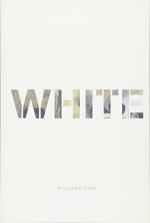|
This section contains 1,969 words (approx. 5 pages at 400 words per page) |

|
Whiteness as Transcendence
Richard Dyer argues that Christian iconography and teaching sets up a construction of whiteness as transcendence, introducing this theme early on in the book on page 17. He writes that such transcendence, which in women must also be passive, entails complementary perspectives in which self-denial is valued, sacrifice viewed as virtue, and more. Given that the figure of Christ and that of the Virgin Mary are the two main images of transcendence and the two greatest informers of the ‘white ideal,’ whiteness is itself imbued with connotations surrounding pain and suffering and their inherent virtue under the eyes of God.
For example, Dyer explores whiteness as a bodily state for much of the book even as he explores its ‘spiritual’ dimensions. Dyer finds that much of Christian imagery and indeed much of painting has historically reveled in images of white male bodily suffering, which “typically conveys a...
|
This section contains 1,969 words (approx. 5 pages at 400 words per page) |

|




